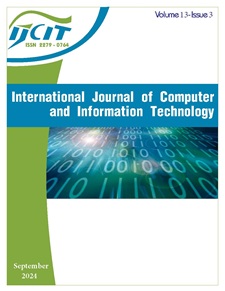File Carving: Analyzing Data Retrieval in Digital Forensics
DOI:
https://doi.org/10.24203/cpps7896Keywords:
Digital Forensic; File Carving; Data Recovery;File Carving Tools and Techniques.Abstract
In the current scenario, mostly the data are stored in digital media. Managing the storage and security of huge volume of data is emerging as a significant challenge for data science researchers and engineers. As data is considered as more costly and powerful than anything else, so during damage or loss of data thousands of dollars are being invested for data recovery. File caving is a technique used for data recovery from the file without the any contextual information when the storage media is formatted or file system got damaged. In this study, we have tried to describe the various types of file caving techniques and the tools used for file caving, along with their limitations and the categories of files which are supported along with the scenario for such recovery.
References
E. Alshammari, G. Al-Naymat and A. Hadi, "A New Technique for File Carving on Hadoop Ecosystem," 2017 International Conference on New Trends in Computing Sciences (ICTCS), Amman, Jordan, 2017, pp. 72-77, doi: 10.1109/ICTCS.2017.16.
Nadeem Alherbawi, Zarina Shukur, Rossilawati Sulaiman, “Systematic Literature Review on Data Carving in Digital Forensic,” Procedia Technology, Volume 11, 2013, Pages 86-92, ISSN 2212-0173, https://doi.org/10.1016/j.protcy.2013.12.165.
Laurenson, T. (2013). “Performance Analysis of File Carving Tools.” In: Janczewski, L.J., Wolfe, H.B., Shenoi, S. (eds) Security and Privacy Protection in Information Processing Systems. SEC 2013. IFIP Advances in Information and Communication Technology, vol 405. Springer, Berlin, Heidelberg. https://doi.org/10.1007/978-3-642-39218-4_31
R. Poisel and S. Tjoa, "A Comprehensive Literature Review of File Carving," 2013 International Conference on Availability, Reliability and Security, Regensburg, Germany, 2013, pp. 475-484, doi: 10.1109/ARES.2013.62.
A. Pal and N. D. Memon, “The evolution of file carving,” IEEE Signal Processing Magazine, vol. March 2009, pp. 59– 71, March 2009.
A. Pal, H. T. Sencar, and N. D. Memon, “Detecting file fragmentation point using sequential hypothesis testing,” DigitalInvestigation, vol. 5, no. Supplement 1, pp. S2 – S13, 2008.
S. L. Garfinkel, “Carving contiguous and fragmented files with fast object validation,” Digital Investigation, vol. 4, no. Supplement 1, pp. 2 – 12, 2007.
C. J. Veenman, “Statistical disk cluster classification for file carving,” in Proc. of Int. Symposium on Information Assurance and Security (IAS’07), vol. 0. Manchester, UK: IEEE CS, 2007, pp. 393–398.
G. G. Richard, V. Roussev, and L. Marziale, “In-place file carving,” in Proc. of IFIP Int. Conf. on Digital Forensics, 2007, pp. 217–230.
Nurhayati and N. Fikri, "The analysis of file carving process using PhotoRec and Foremost," 2017 4th International Conference on Computer Applications and Information Processing Technology (CAIPT), Kuta Bali, Indonesia, 2017, pp. 1-6, doi: 10.1109/CAIPT.2017.8320663.
M. McDaniel and M. H. Heydari, “Content based file type detection algorithms,” in Proc. of the 36th Annual Hawaii Int.Conf. on System Sciences (HICSS’03) - Track 9. Washington, DC, USA: IEEE CS, 2003, p. 332.1.
Downloads
Published
Issue
Section
License
Copyright (c) 2024 Purna Chandra Sethi

This work is licensed under a Creative Commons Attribution-NonCommercial 4.0 International License.
The articles published in International Journal of Computer and Information Technology (IJCIT) is licensed under a Creative Commons Attribution-NonCommercial 4.0 International License.


